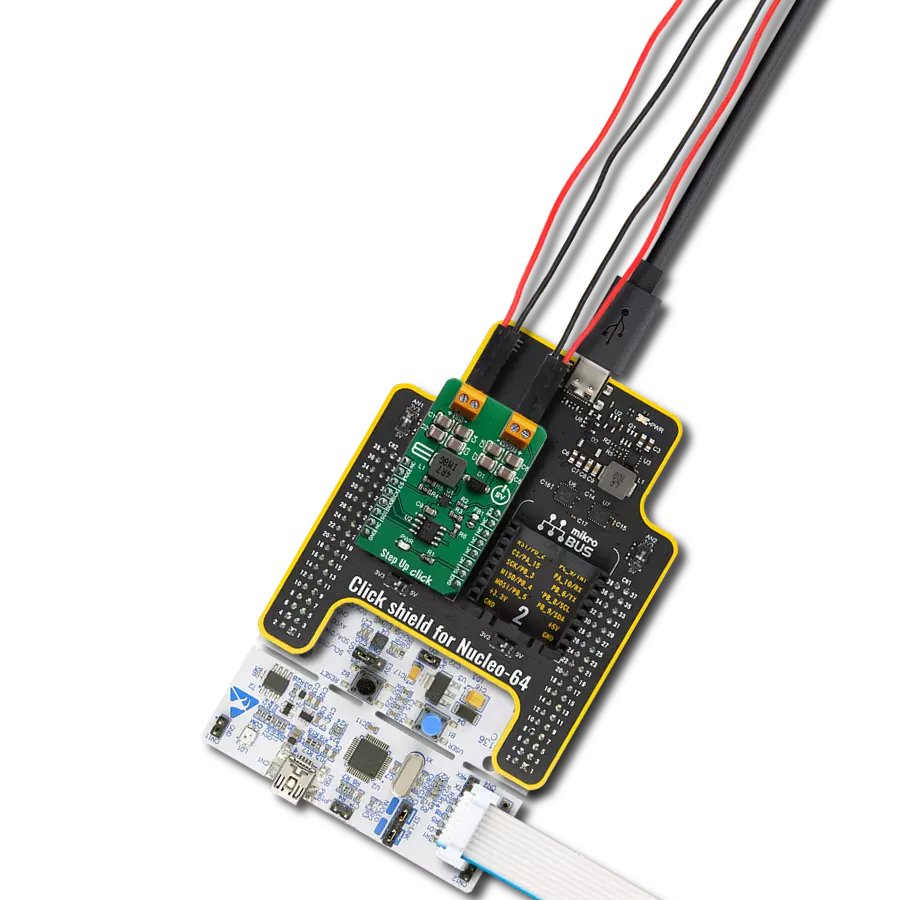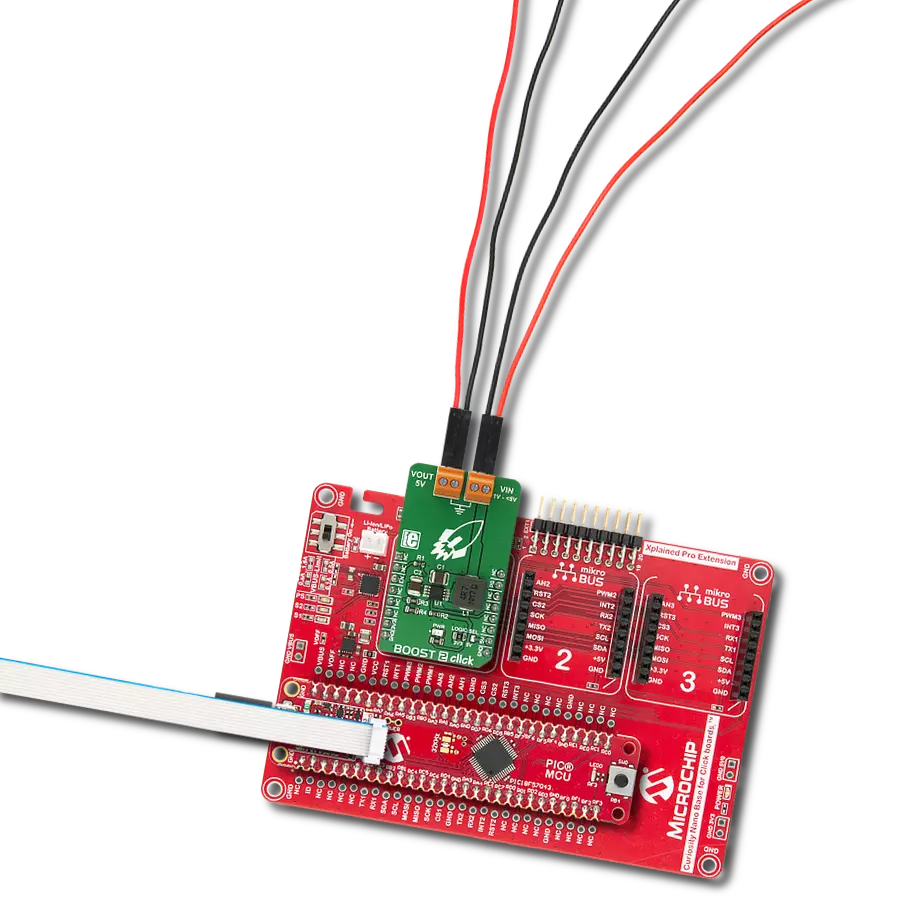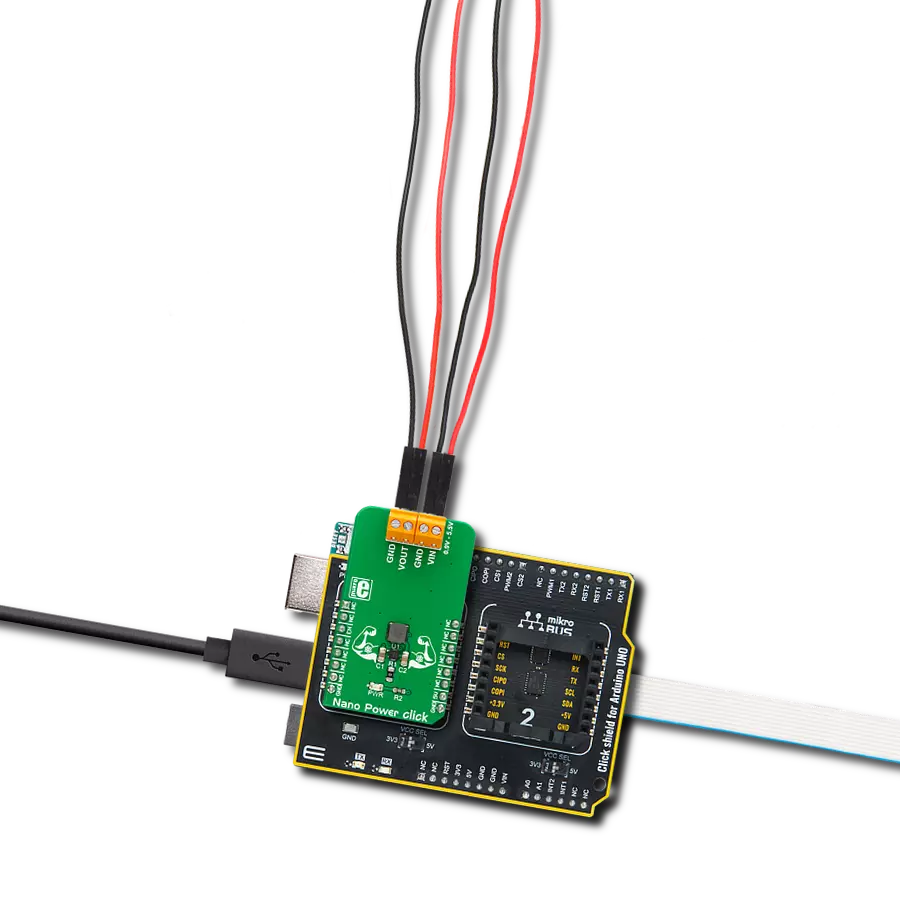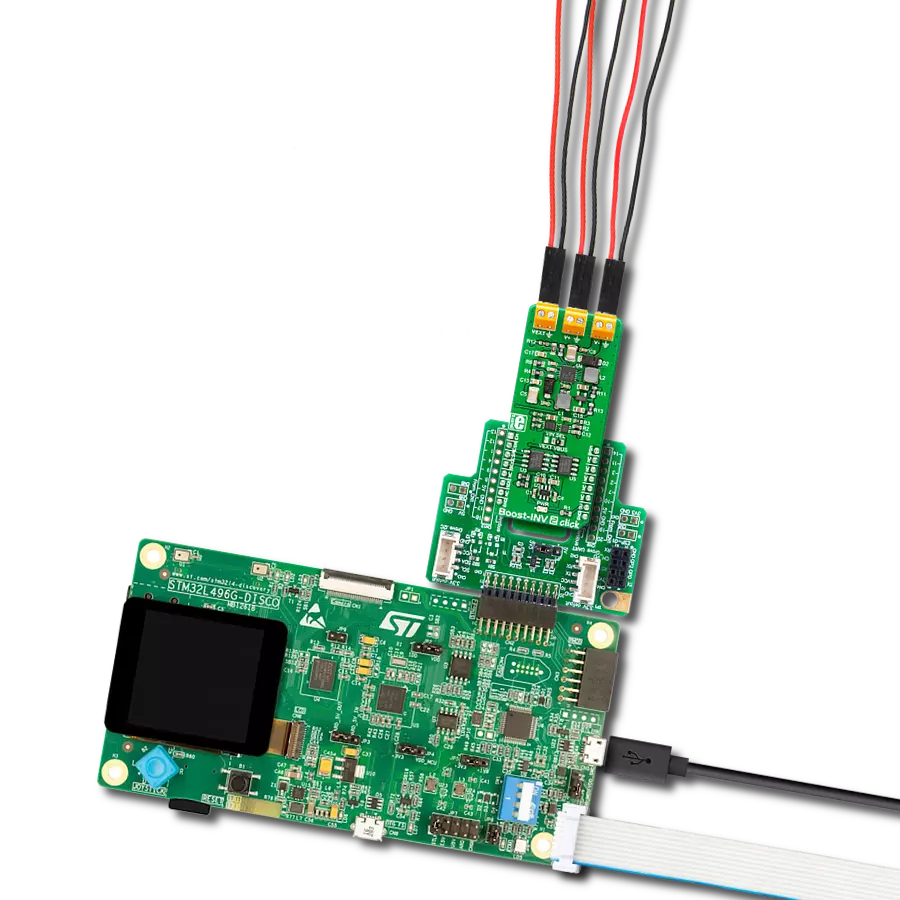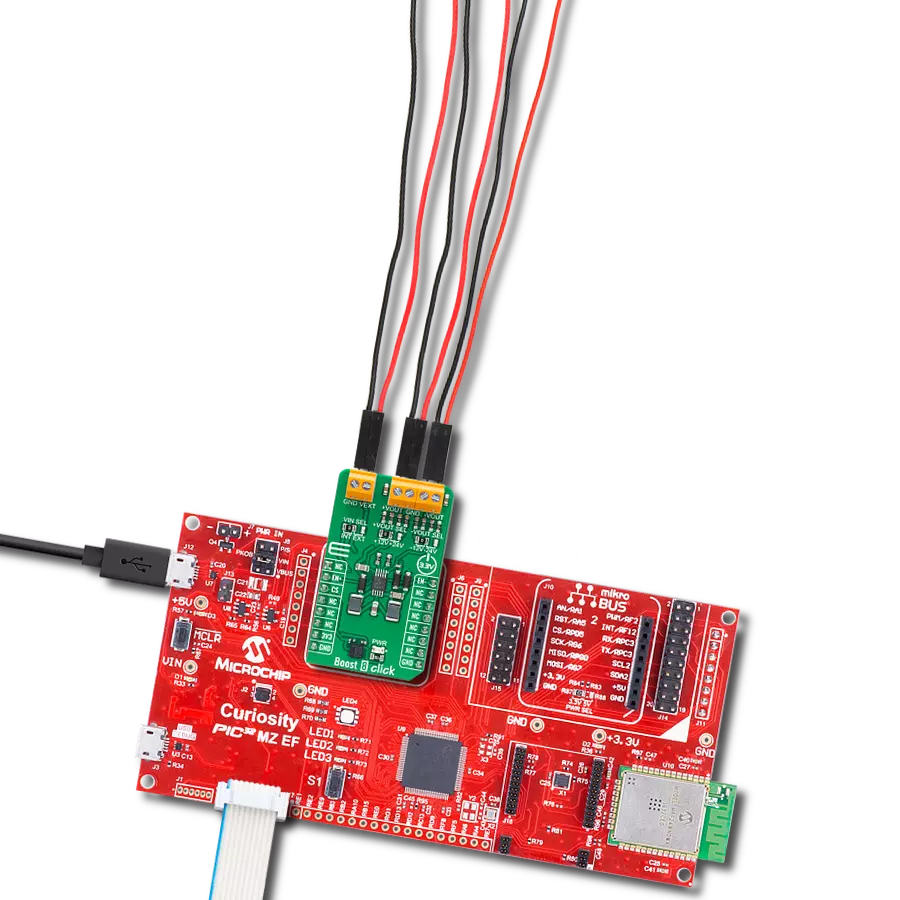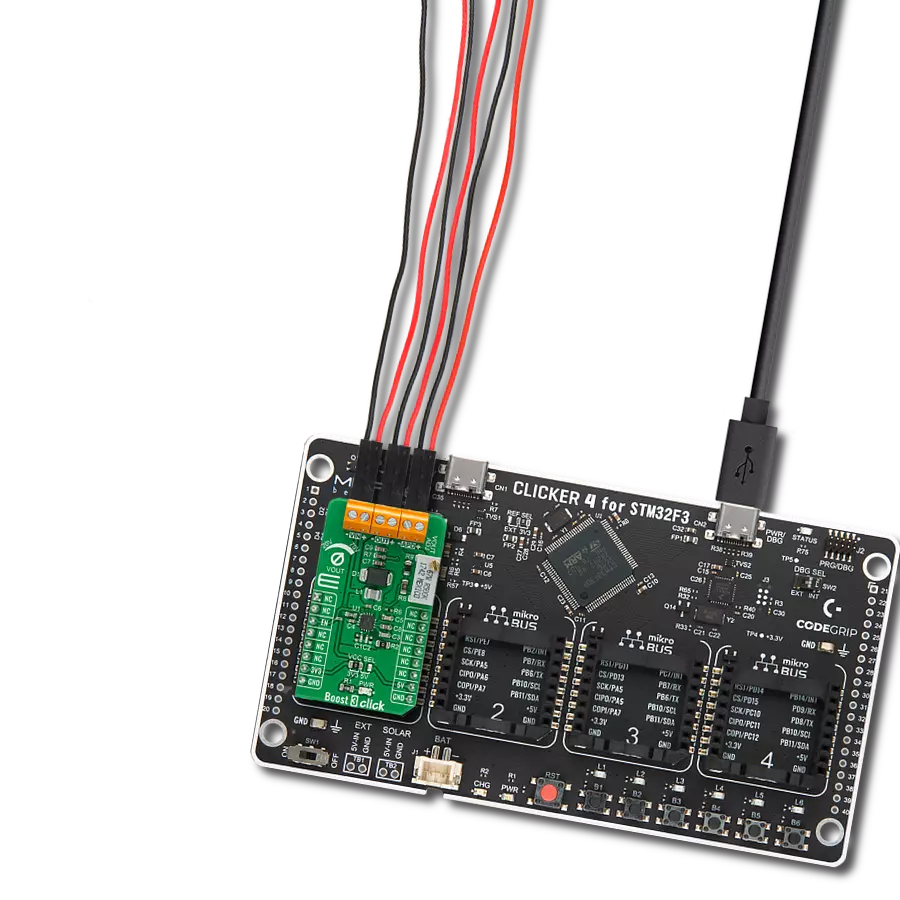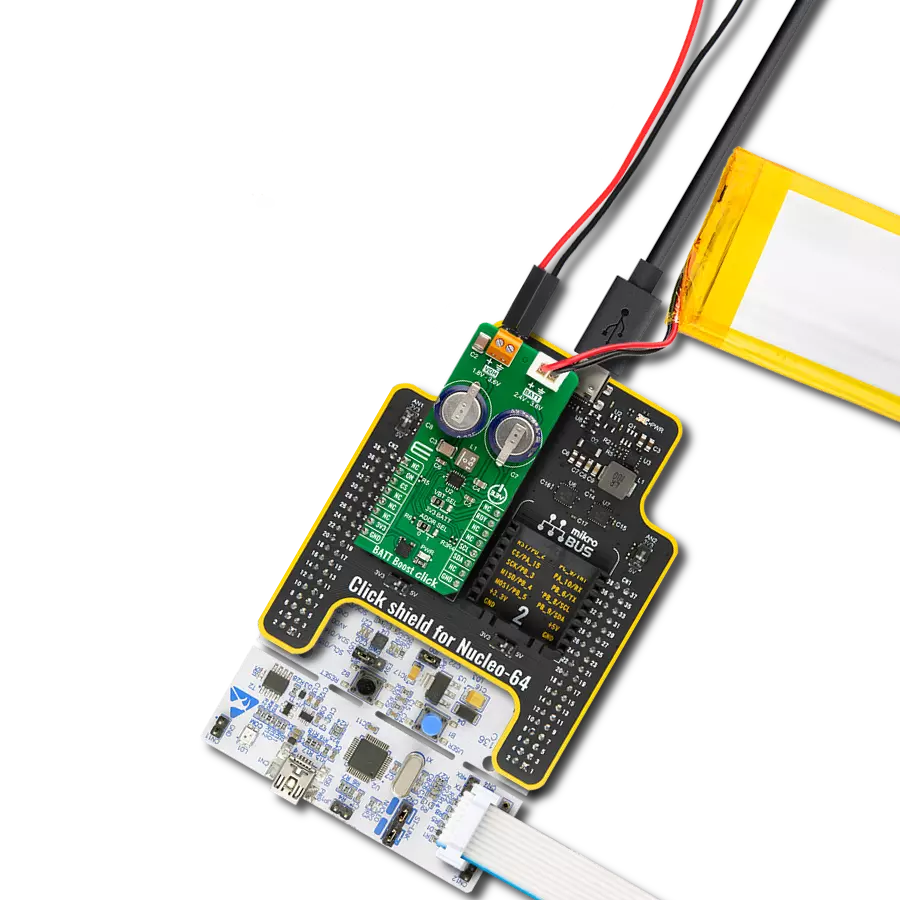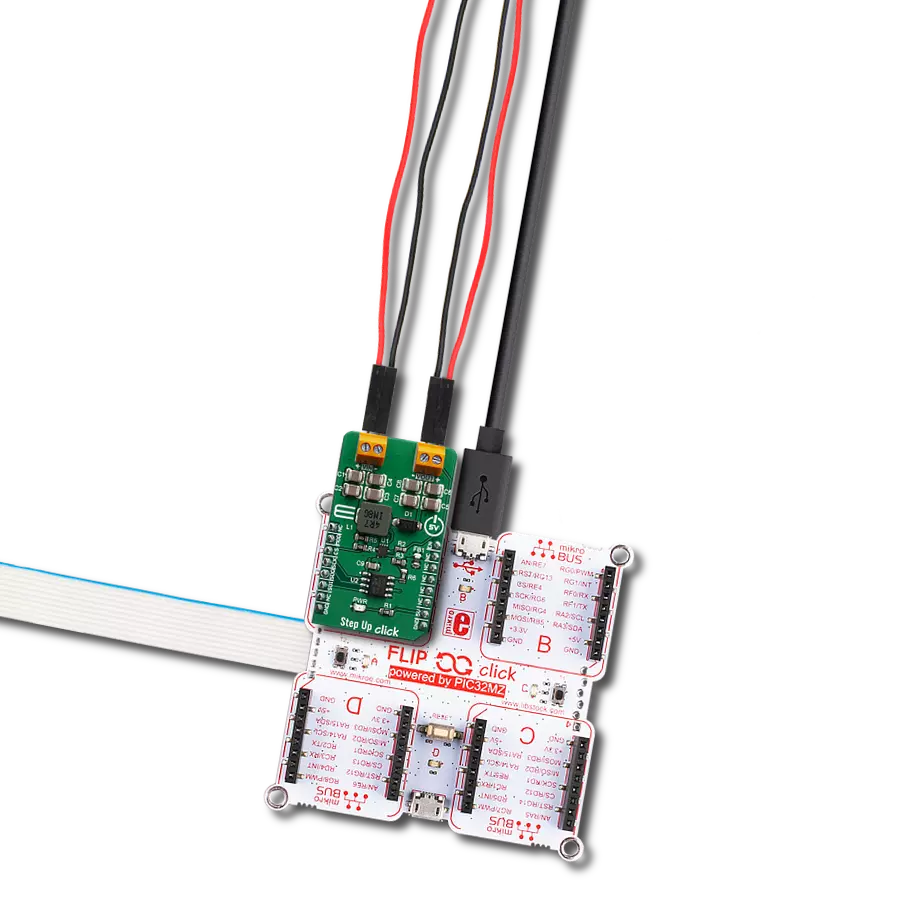Enhance the power and prolong the lifespan of coin battery cells like the CR2032, ensuring longer-lasting performance for a wide range of electronic devices
A
A
Hardware Overview
How does it work?
BATT Boost Click is based on the NBM5100A, a coin-cell battery life booster with adaptive power optimization from Nexperia. It contains an intelligent learning algorithm and two stages of high-efficiency DC-DC conversion. The first stage, DC-DC conversion, transfers energy from the lithium battery to a capacitive storage element at a low constant current. When charged, a second DC-DC conversion cycle utilizes this stored energy to supply a regulated voltage with high pulse load current capability on the VDH output terminal. The battery is never directly subjected to large load pulse currents, resulting in a longer, more predictable battery lifetime. The NBM5100A has a programmable constant battery load current of 2mA
up to 16mA. It also features an ultra-low standby current, integrated fuel gauge, high peak power efficiency, low pulse output current, protection against battery voltage dips, and more. The capacitor balancing IO of the NBM1500A is connected to two supercapacitors and is intended for applications utilizing series-connected supercapacitors requiring voltage balancing. The input supply source of the NBM5100A can be selected from the 3.3V rail of the mikroBUS™ socket or the coin battery itself. The selection can be made over the VBT SEL jumper. BATT Boost Click uses a standard 2-wire I2C interface to communicate with the host MCU, supporting a clock frequency of up to 1MHz. The I2C address
can be selected over the ADDR SEL jumper. The auto mode utilizes the start pin (ON) for one cycle. There are two ways to define the end of the active state in auto mode: short pulse on the ON pin and long pulse on the ON pin. The NBM1500A will interrupt the host MCU when it is ready over the RDY pin. This Click board™ can be operated only with a 3.3V logic voltage level. The board must perform appropriate logic voltage level conversion before using MCUs with different logic levels. Also, it comes equipped with a library containing functions and an example code that can be used as a reference for further development.
Features overview
Development board
Clicker 4 for STM32F4 is a compact development board designed as a complete solution that you can use to quickly build your own gadgets with unique functionalities. Featuring an STM32F407VGT6 MCU, four mikroBUS™ sockets for Click boards™ connectivity, power management, and more, it represents a perfect solution for the rapid development of many different types of applications. At its core is an STM32F407VGT6 MCU, a powerful microcontroller by STMicroelectronics based on the high-performance
Arm® Cortex®-M4 32-bit processor core operating at up to 168 MHz frequency. It provides sufficient processing power for the most demanding tasks, allowing Clicker 4 to adapt to any specific application requirements. Besides two 1x20 pin headers, four improved mikroBUS™ sockets represent the most distinctive connectivity feature, allowing access to a huge base of Click boards™, growing on a daily basis. Each section of Clicker 4 is clearly marked, offering an intuitive and clean interface. This makes working with the
development board much simpler and, thus, faster. The usability of Clicker 4 doesn’t end with its ability to accelerate the prototyping and application development stages: it is designed as a complete solution that can be implemented directly into any project, with no additional hardware modifications required. Four mounting holes [4.2mm/0.165”] at all four corners allow simple installation by using mounting screws.
Microcontroller Overview
MCU Card / MCU
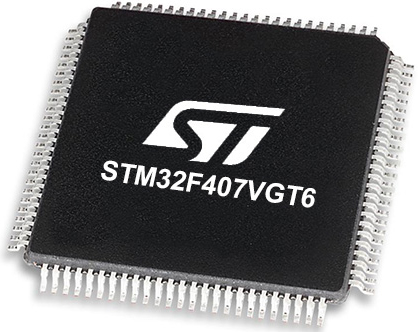
Architecture
ARM Cortex-M4
MCU Memory (KB)
10
Silicon Vendor
STMicroelectronics
Pin count
100
RAM (Bytes)
100
You complete me!
Accessories
Li-Polymer Battery is the ideal solution for devices that demand a dependable and long-lasting power supply while emphasizing mobility. Its compatibility with mikromedia boards ensures easy integration without additional modifications. With a voltage output of 3.7V, the battery meets the standard requirements of many electronic devices. Additionally, boasting a capacity of 2000mAh, it can store a substantial amount of energy, providing sustained power for extended periods. This feature minimizes the need for frequent recharging or replacement. Overall, the Li-Polymer Battery is a reliable and autonomous power source, ideally suited for devices requiring a stable and enduring energy solution. You can find a more extensive choice of Li-Polymer batteries in our offer.
Used MCU Pins
mikroBUS™ mapper
Take a closer look
Click board™ Schematic

Step by step
Project assembly
Software Support
Library Description
This library contains API for BATT Boost Click driver.
Key functions:
battboost_get_vcap- This function is used to read the storage capacitor voltage statusbattboost_set_op_mode- This function is used to select the desired operating mode of the devicebattboost_get_status- This function reads the the status information of low battery input, capacitor input voltage early warning, VDH output alarm and ready state
Open Source
Code example
The complete application code and a ready-to-use project are available through the NECTO Studio Package Manager for direct installation in the NECTO Studio. The application code can also be found on the MIKROE GitHub account.
/*!
* @file main.c
* @brief BATT Boost Click example
*
* # Description
* This library contains API for the BATT Boost Click driver.
* This driver provides the functions to controle battery energy management
* device designed to maximize usable capacity from non-rechargeable.
*
* The demo application is composed of two sections :
*
* ## Application Init
* Initialization of I2C module and log UART.
* After driver initialization, the app executes a default configuration,
* sets the output voltage to 1.8V, charge current to 16mA,
* and early warning voltage to 2.6V.
*
* ## Application Task
* This example demonstrates the use of the BATT Boost Click board.
* The demo application uses two operations in two states:
* the charging state and the active state. First, when the device is in a Charge state,
* the external storage capacitor is charging from VBT using a constant current
* and displays storage capacitor voltage levels and charge cycle count.
* Upon completion of a Charge state, the device transitions to the Active state
* at which time VDH becomes a regulated voltage output of 1.8V (default configuration),
* displays storage capacitor voltage level, and monitors alarms
* for low output voltage (below 1.8V) and early warning (below 2.4V).
* Results are being sent to the UART Terminal, where you can track their changes.
*
* @author Nenad Filipovic
*
*/
#include "board.h"
#include "log.h"
#include "battboost.h"
static battboost_t battboost;
static log_t logger;
void application_init ( void )
{
log_cfg_t log_cfg; /**< Logger config object. */
battboost_cfg_t battboost_cfg; /**< Click config object. */
/**
* Logger initialization.
* Default baud rate: 115200
* Default log level: LOG_LEVEL_DEBUG
* @note If USB_UART_RX and USB_UART_TX
* are defined as HAL_PIN_NC, you will
* need to define them manually for log to work.
* See @b LOG_MAP_USB_UART macro definition for detailed explanation.
*/
LOG_MAP_USB_UART( log_cfg );
log_init( &logger, &log_cfg );
log_info( &logger, " Application Init " );
// Click initialization.
battboost_cfg_setup( &battboost_cfg );
BATTBOOST_MAP_MIKROBUS( battboost_cfg, MIKROBUS_1 );
if ( I2C_MASTER_ERROR == battboost_init( &battboost, &battboost_cfg ) )
{
log_error( &logger, " Communication init." );
for ( ; ; );
}
if ( BATTBOOST_ERROR == battboost_default_cfg ( &battboost ) )
{
log_error( &logger, " Default configuration." );
for ( ; ; );
}
log_info( &logger, " Application Task " );
Delay_ms ( 100 );
}
void application_task ( void )
{
float vcap = 0;
uint8_t status = 0;
uint32_t chenergy = 0;
if ( BATTBOOST_STATUS_READY != battboost_get_ready( &battboost ) )
{
if ( BATTBOOST_OK == battboost_set_op_mode( &battboost, BATTBOOST_OP_MODE_CHARGE ) )
{
log_printf( &logger, "\nOperating state: Charge\r\n" );
}
if ( BATTBOOST_OK == battboost_get_vcap( &battboost, &vcap ) )
{
log_printf( &logger, " Capacitor Voltage: %.2f V \r\n", vcap );
}
if ( BATTBOOST_OK == battboost_get_chenergy( &battboost, &chenergy ) )
{
log_printf( &logger, " Charge cycle count: %lu \r\n", chenergy );
}
Delay_ms ( 1000 );
}
else
{
if ( BATTBOOST_OK == battboost_set_op_mode( &battboost, BATTBOOST_OP_MODE_ACTIVE ) )
{
log_printf( &logger, "\nOperating state: Active\r\n" );
if ( BATTBOOST_OK == battboost_get_vcap( &battboost, &vcap ) )
{
log_printf( &logger, " Capacitor Voltage: %.2f V \r\n", vcap );
}
if ( BATTBOOST_OK == battboost_get_status( &battboost, &status ) )
{
if ( BATTBOOST_STATUS_EW & status )
{
log_printf( &logger, " Status: Early warning.\r\n" );
}
if ( BATTBOOST_STATUS_ALRM & status )
{
log_printf( &logger, " Status: Low output voltage in the Active state.\r\n" );
}
}
}
Delay_ms ( 1000 );
}
}
int main ( void )
{
/* Do not remove this line or clock might not be set correctly. */
#ifdef PREINIT_SUPPORTED
preinit();
#endif
application_init( );
for ( ; ; )
{
application_task( );
}
return 0;
}
// ------------------------------------------------------------------------ END
Additional Support
Resources
Category:Boost




















